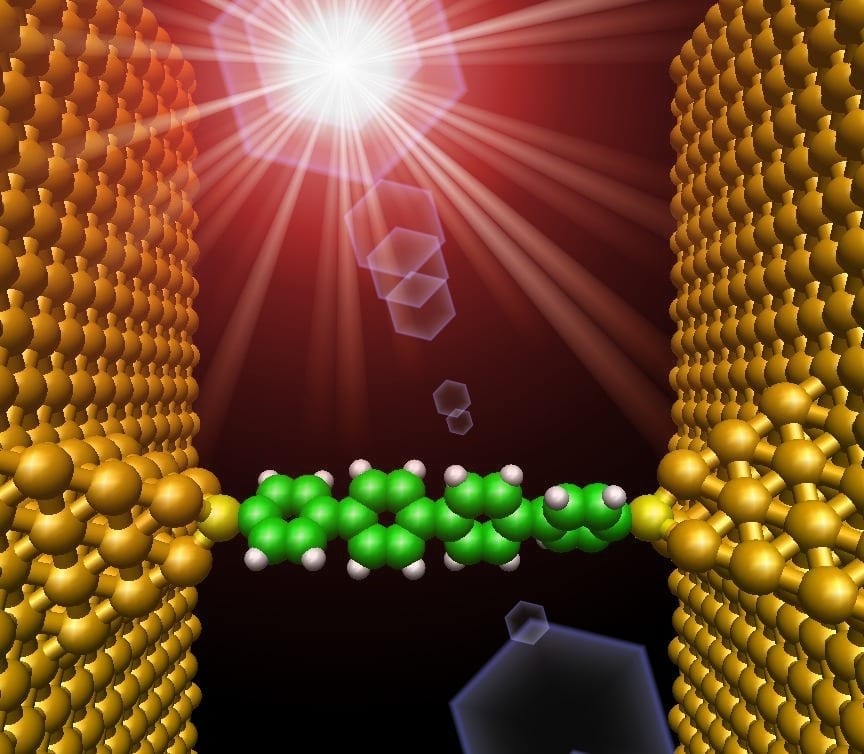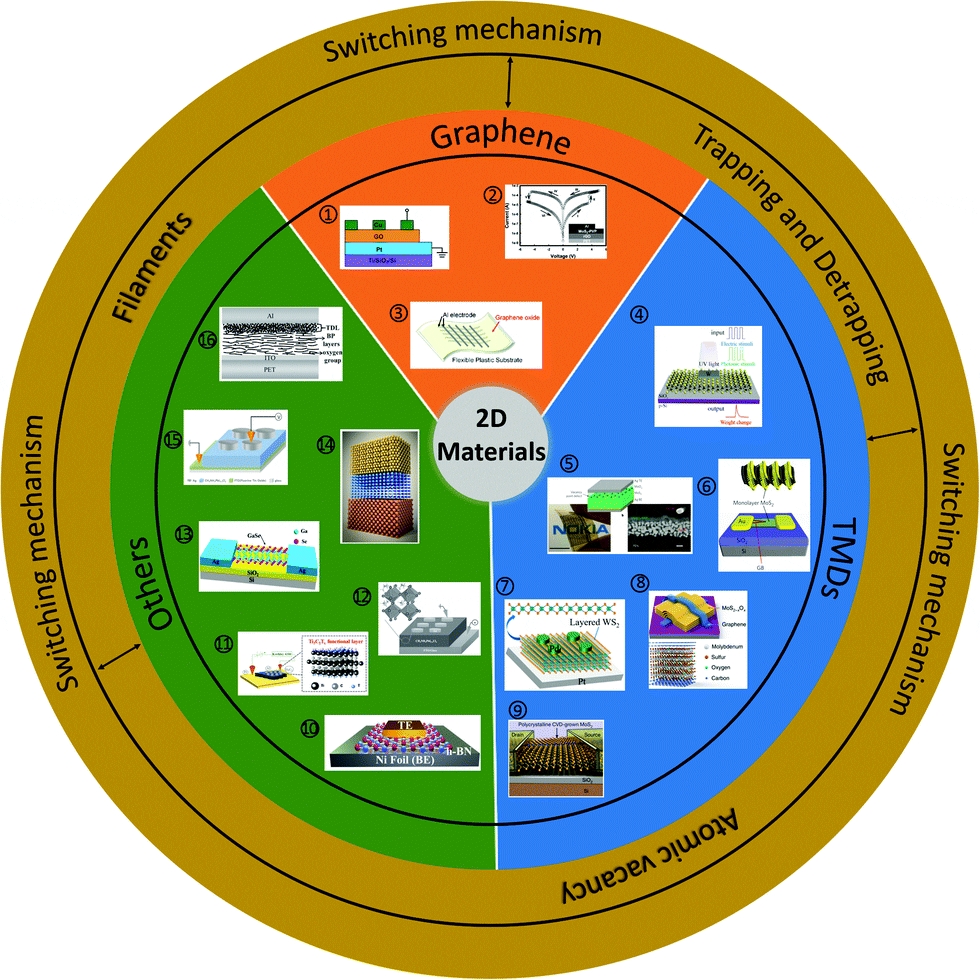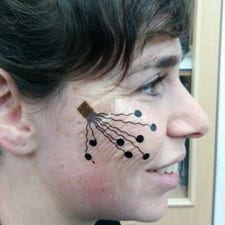
Technion breakthrough could replace silicon chips in the world of electronics
Technion researchers have developed a method for growing carbon nanotubes that could lead to the day when molecular electronics replace the ubiquitous silicon chip as the building block of electronics. The findings are published this week in Nature Communications.
Carbon nanotubes (CNTs) have long fascinated scientists because of their unprecedented electrical, optical, thermal and mechanical properties, and chemical sensitivity. But significant challenges remain before CNTs can be implemented on a wide scale, including the need to produce them in specific locations on a smooth substrate, in conditions that will lead to the formation of a circuit around them.
Led by Prof. Yuval Yaish of the Viterbi Faculty of Electrical Engineering and the Zisapel Nanoelectronics Center at the Technion, the researchers have developed a technology that addresses these challenges. Their breakthrough also makes it possible to study the dynamic properties of CNTs, including acceleration, resonance (vibration), and the transition from softness to hardness.
The method could serve as an applicable platform for the integration of nano-electronics with silicon technologies, and possibly even the replacement of these technologies in molecular electronics.
“The CNT is an amazing and very strong building block with remarkable electrical, mechanical and optical properties,” said Prof. Yaish. “Some are conductors, and some are semiconductors, which is why they are considered a future replacement for silicon. But current methods for the production of CNTs are slow, costly, and imprecise. As such, they generally cannot be implemented in industry.”
Due to the nanometer size of the CNTs (100,000 times smaller in diameter than the thickness of a human hair) it is extremely difficult to find or locate them at specific locations. Prof. Yaish, and graduate students Gilad Zeevi and Michael Shlafman, developed a simple, rapid, non-invasive and scalable technique that enables optical imaging of CNTs. Instead of depending upon the CNT chemical properties to bind marker molecules, the researchers relied on the fact that the CNT is both a chemical and physical defect on the otherwise flat and uniform surface. It can serve as a seed for the nucleation and growth of small, but optically visible nanocrystals, which can be seen and studied using a conventional optical microscope (CNTs, because of their small size, are too small to be seen in this way). Since the CNT surface is not used to bind the molecules, they can be removed completely after imaging, leaving the surface intact, and preserving the CNT’s electrical and mechanical properties.
“Our approach is the opposite of the norm,” he continued. “We grow the CNTs directly, and with the aid of the organic crystals that coat them, we can see them under a microscope very quickly. Then image identification software finds and produces the device (transistor). This is the strategy. The goal is to integrate CNTs in an integrated circuit of miniaturized electronic components (mainly transistors) on a single chip (VLSI). These could one day serve as a replacement for silicon electronics.”
Learn more: Watch Out, Silicon Chips. Molecular Electronics Are Coming
The Latest on: Molecular Electronics
[google_news title=”” keyword=”Molecular Electronics” num_posts=”10″ blurb_length=”0″ show_thumb=”left”]
via Google News
The Latest on: Molecular Electronics
- Caris Life Sciences and COTA, Inc. Announce Collaboration to Expand Collective Multi-Modal Data Offeringon April 30, 2024 at 3:37 am
Caris Life Sciences ® (Caris), the leading next-generation AI TechBio company and precision medicine pioneer that is actively developing and delivering innovative solutions to revolutionize healthcare ...
- Hepatitis A Virus: Serology and Molecular Diagnosticson April 27, 2024 at 5:00 pm
Molecular diagnosis of HAV along with anti-HAV IgG avidity measurement are helpful in case of positive IgM where laboratory evidence of acute hepatitis is absent and there is no epidemiologic link ...
- Molecular electronics: what will future gadgets be like?on April 26, 2024 at 6:58 am
The discovery that won the latest Nobel Prize in physics seems far away from our life, but one day everything could change with the arrival of molecular gadgets. We've tried to look into the future.
- MOLN Molecular Partners AGon April 26, 2024 at 4:02 am
Molecular Partners AG, a clinical-stage biotechnology company, develops designed ankyrin repeat proteins therapeutics for the treatment of oncology and virology diseases in Switzerland. The ...
- More efficient molecular motor widens potential applicationson April 26, 2024 at 2:00 am
Light-driven molecular motors were first developed nearly 25 years ago at the University of Groningen, the Netherlands. This resulted in a shared Nobel Prize for Chemistry for Professor Ben Feringa in ...
- Research combines DNA origami and photolithography to move one step closer to molecular computerson April 24, 2024 at 8:49 am
Molecular computer components could represent a new IT revolution and help us create cheaper, faster, smaller, and more powerful computers. Yet researchers struggle to find ways to assemble them more ...
- Molecular Psychiatryon April 21, 2024 at 5:00 pm
Molecular Psychiatry is a scientific journal published by Nature Publishing Group. It publishes papers in biological psychiatry and, e.g., about psychiatric genetics. With an impact factor of 15. ...
- Single-Molecule Transistor Using Quantum Interferenceon April 16, 2024 at 2:35 pm
A new technical paper titled “Quantum interference enhances the performance of single-molecule transistors” was published by researchers at Queen Mary University of London, University of Oxford, ...
- MTEM Molecular Templates, Inc.on April 12, 2024 at 3:21 pm
Molecular Templates, Inc., a clinical stage biopharmaceutical company, focuses on the discovery and development of biologic therapeutics for the treatment of cancer and other serious diseases in ...
- Molecular Electronics: Building Circuits at the Nanoscaleon April 3, 2024 at 2:36 pm
Molecular electronics is a branch of nanotechnology that focuses on using individual molecules or nanoscale molecular structures as electronic components to create miniaturized circuits and devices.
via Bing News










